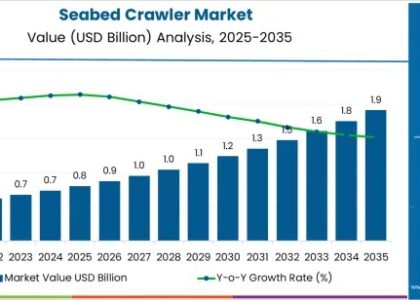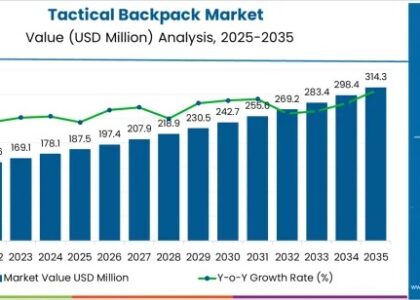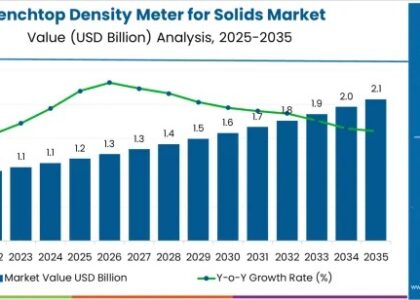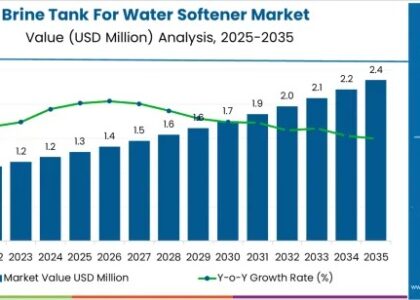At a CAGR of 5.9% from 2023 to 2033, the global fructose market is to reach US$ 15,556.5 million in 2033, up from an estimated US$ 8,791 million in 2023.
Over the predicted timeframe, the industry may very well be likely to grow quickly. Due to the increased demand for fructose around the world, the global fructose market is growing. Despite the fact that fruits and vegetables naturally contain fructose, products in the food and beverage industries employ refined fructose made from corn syrup.
Unleash Knowledge’s Power! Request Our Report Sample Today for Enhanced Understanding
https://www.futuremarketinsights.com/reports/sample/rep-gb-2108
Experiencing Increased Health Consciousness and Growing Demand for Sugar Replacements
Sugar replacements such as calorie-free fructose are in high demand in emerging markets due to rising consumer health consciousness and disposable wealth. People with diabetes and other blood sugar issues choose calorie-free snacks, which helps the fructose industry flourish.
The constant need for fructose as a sweetener in a variety of meals, including bread goods, health beverages, juices, and confectionary, has boosted the need for fructose dramatically. The non-caloric sweetener fructose, which is used in a range of food products by families and restaurants, is what drives the need for fructose syrup.
Increasing Worries over Diet Intake are Impeding the Market Expansion
The World Health Organisation (WHO) predicts that nutritional diseases would be the cause of 73% of mortality in 2020. As awareness of obesity, diabetes, cardiovascular diseases, and digestive issues rises, consumers are becoming more worried about their food intake.
The fact that customers worldwide are switching from fructose sweeteners to zero-calorie sweeteners is one of the primary factors that are regarded to be reducing the growth of the fructose syrup business.
Regional Outlook
With a sales share of more than 44%, North America dominated the global fructose market. The rise of the sector has been aided by the popularity of packaged beverages in the area, such as juices, sports drinks, and carbonated soft drinks. Consumer preferences in this area are gradually turning towards organic goods, which are probably going to adversely impact product demand.
Due to the growth in geriatrics, who are sensitive to chronic diseases, the demand is increasing in Europe at a slow pace. Since customers in the area prioritize their health, they consume few sweet foods and beverages, which has an impact on the fructose market expansion.
Asia Pacific is to witness significant growth because of the significantly growing beverage industries in China and India. The demand for food products including bottled drinks, candies, and chocolates is to increase due to the growing population and a change in consumer lifestyle.
Key Takeaways:
- From 2023 to 2033, the sugarcane segment in the source category is to expand at a CAGR of 5.6%.
- Between 2023 and 2033, the application segment in the end-use category may develop at a CAGR of 6.5%.
- The United States fructose market is to develop at a CAGR of 30.2%, reaching US$ 1,379.6 million by 2033.
- Germany fructose syrup market is to secure a CAGR of 33%, reaching US$ 718.6 million by 2033.
- The United Kingdom fructose market is to capture a CAGR of 31.3%, reaching US$ 747.3 million by 2033.
- China fructose market is to hold a CAGR of 32.6%, reaching US$ 1,207.2 million by 2033.
- Spain D-fructose market is to witness a CAGR of 33.3%, reaching US$ 534.6 million by 2033.
Analysis of the Business
Due to the existence of numerous large and medium-sized businesses that provide comparable items, the fructose market is extremely fragmented and competitive. The value chain has vertically integrated key fructose manufacturers.
To access the local markets, fructose manufacturers are primarily focusing on small- and medium-sized end users. Additionally, they are attempting to take root in emerging economies where the bread, dairy, and food & beverage sectors are all expanding significantly. These tactics help businesses enter local markets and give them new prospects for expansion.
Lift the Veil on Our Methodological Excellence
https://www.futuremarketinsights.com/request-report-methodology/rep-gb-2108
Notable Innovation and Development:
The VANTAGE sweetener solution design tools were made available by Tate & Lyle in July 2020. It is both an educational curriculum and a collection of fresh and cutting-edge tools for designing sweetener solutions for foods and beverages that are low in calories and high in sweetness.
About Future Market Insights (FMI)
Future Market Insights, Inc. (ESOMAR certified, recipient of the Stevie Award, and a member of the Greater New York Chamber of Commerce) offers profound insights into the driving factors that are boosting demand in the market. FMI stands as the leading global provider of market intelligence, advisory services, consulting, and events for the Packaging, Food and Beverage, Consumer Technology, Healthcare, Industrial, and Chemicals markets. With a vast team of over 5000 analysts worldwide, FMI provides global, regional, and local expertise on diverse domains and industry trends across more than 110 countries.
Contact Us:
Future Market Insights Inc.
Christiana Corporate, 200 Continental Drive,
Suite 401, Newark, Delaware – 19713, USA
T: +1-845-579-5705
For Sales Enquiries: sales@futuremarketinsights.com
Website: https://www.futuremarketinsights.com
LinkedIn| Twitter| Blogs | YouTube





